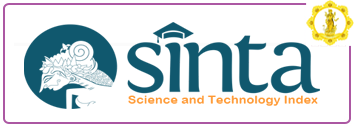Penggunaan Program Bali Simbar Dwijendra dalam Pembelajaran Aksara Bali di SMP Negeri 2 Mengwi
DOI:
https://doi.org/10.25078/ds.v3i1.2371Keywords:
Bali Simbar Dwijendra Program, Balinese Literacy LearningAbstract
Balinese language learning is local content learning with aspects of listening, speaking, reading and writing skills. Regarding writing skills, one of them is copying Latin letters into Balinese script. Based on the author's initial observations at SMP Negeri 2 Mengwi, the low level of student activity related to learning Balinese script can reflect the low level of student interest. Along with the development of technology, creativity is needed in introducing Balinese script, where the Bali Simbar Dwijendra program is considered effective in increasing student interest in learning Balinese script. This study aims to analyze and explain the application, causal factors, and implications of using the Bali Simbar Dwijendra program in learning Balinese script for students, teachers, and SMP Negeri 2 Mengwi schools. This type of research is a qualitative research with data obtained through observation, interviews, literature study, and document study. Data analysis techniques include data reduction, data presentation, and drawing conclusions by presenting using descriptive methods. The results showed that the implementation of the use of the Bali Simbar Dwijendra program in learning Balinese script was carried out in three stages, namely learning planning, learning implementation, and learning evaluation. The factors causing the use of the Bali Simbar Dwijendra program in learning Balinese script are internal factors and external factors. The use of the Bali Simbar Dwijendra program has positive implications for students, teachers, and institutions of SMP Negeri 2 Mengwi. This shows that the Bali Simbar Dwijendra program is effectively used in increasing the interest and quality of learning Balinese script at SMP Negeri 2 Mengwi.









